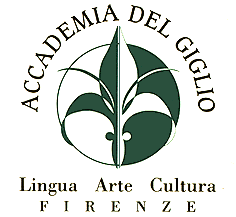 Avete mai sentito parlare di Nessie, il mostro di Loch Ness?
Avete mai sentito parlare di Nessie, il mostro di Loch Ness?
Avete mai letto la storia di San Giorgio, della principessa e del drago?
Il drago è da sempre stato una creatura immaginaria presente nella fantasia dell’uomo.
Il nome drago viene dal greco drákōn, dal verbo dérkomai che significa “fissare lo sguardo” ed è presente in svariati miti greci, come in quello del drago Ladone, padre delle Esperidi, ucciso da Ercole e poi andato a costituire la costellazione del Drago, o nelle favole di Fedro, dove per la prima volta compare come custode di tesori mervigliosi.
Durante il Medioevo si trovano descrizioni particolareggiate dei draghi all’interno dei Bestiari: in essi si legge che questi mostri abitano di solito in territori remoti e difficilmente  raggiungibili, fortunatamente (!) escono di rado e con il loro ruggito riescono a spaventare qualunque tipo di animale, anche il più feroce.
raggiungibili, fortunatamente (!) escono di rado e con il loro ruggito riescono a spaventare qualunque tipo di animale, anche il più feroce.
Se nella mitologia cinese il drago è un essere positivo, una creatura saggia, in generale in Occidente il drago ha valenza negativa, è simbolo di lotta e persino del Male e non sono poche le leggende di santi che si sono confrontati con queste orribili creature: San Giorgio, San Marcello a Parigi e San Silvestro o San Gregorio a Roma sono solo alcuni dei più noti. Del resto la leggenda di San Giorgio è uno dei soggetti più amati dagli artisti di ogni tempo: chi, infatti, non conosce i bellissimi dipinti di Paolo Uccello in cui San Giorgio compare nell’atto di accecare il Drago o l’interpretazione di Raffaello della stessa vicenda? Persino una città come Genova aveva associato il proprio nome a quello del Santo in passato, tanto il suo culto era diffuso.
Ci sono vari tipi di draghi ma l’aspetto tradizionale del drago è noto a tutti: si tratta di un grosso rettile, simile a un dinosauro o a un enorme coccodrillo, con ali di pipistrello. Il colore può essere di vario tipo: dal nero al verde, dal grigio al marrone, ma anche rosso, blu o viola. In Cina, invece, il suo corpo è formato dalle parti di animali diversi: il muso di coccodrillo, il corpo di serpente, la criniera e gli artigli di leone, e le corna di cervo.
 Nella Rete è possibile trovare svariati siti relativi a queste strane e meravigliose creature, ma anche molti video e blog. Un video piuttosto spettacolare è qui, mentre qui potrete vederne uno a proposito di un disegnatore e scrittore che ha redatto un libro particolare proprio relativo ai draghi. Recentemente è stata persino organizzata una mostra a New York sui draghi, spesso protagonisti di film, come questo che narra la storia dolce-amara e un po’ insolita di un drago buono.
Nella Rete è possibile trovare svariati siti relativi a queste strane e meravigliose creature, ma anche molti video e blog. Un video piuttosto spettacolare è qui, mentre qui potrete vederne uno a proposito di un disegnatore e scrittore che ha redatto un libro particolare proprio relativo ai draghi. Recentemente è stata persino organizzata una mostra a New York sui draghi, spesso protagonisti di film, come questo che narra la storia dolce-amara e un po’ insolita di un drago buono.







Monsters and Fantastic Creatures: the Dragon
Have you ever heard talk of Nessie, the Loch Ness Monster?
Have you ever read the story of Saint George, of the princess of the dragon?
The dragon was always an imaginary creature present in the fantasies of man.
The name dragon comes from the Greek drákōn, of the verb dérkomai that means “to fasten the glance” and is present in diverse Greek myths, like that of the dragon Ladone, father of Hesperides, slain by Hercules and then became the constellation of the Dragon, or in the fable of Fedro, where for the first time emerged as the guardian of the treasure hoard.
During the Medieval Ages they found detailed descriptions of dragons at the center of Bestiary: in them they read that these monsters usually live in remote territories and are difficult to pass, fortunately they rarely go out and with their roars succeed in scaring away any type of animal, even the most ferocious. In Chinese mythology the dragon is a wise creature, generally in the West it has negative connotations, it is a symbol of struggle and even Sin and is not part of the legends of saints that confronted these horrible creatures: Saint George, Saint Mark of Paris and Saint Sylvester or Saint Gregory of Rome are only some of the most well-known. The legend of Saint George is one of the subjects most loved from the artists of their time: who, in fact, don’t know the great painters of Paolo Uccello in which Saint George accomplishes the act of blinding the Dragon or in Raphael’s interpretation of the same event? Even a city like Genoa associated just that name of the Saint in the past, many of their cults were diffused. There are various types of dragons but traditional appearance of the dragon is well-known everywhere: it is described as a big reptile, similar to a dinosaur or an enormous crocodile, with wings of a bat. It can come in various colors: from black to green, from grey to brown, but also red, blue or violet. In China, instead, its body was structured from diverse animal parts: the snout of a crocodile, the body of a serpent, the mane and the claws of a lion, and the horn of a deer.
On the internet it is possible to find diverse sites relating to these strange and marvelous creatures, but also on many videos and blogs. A rather spectacular video is here, while here we are able to make a proposition of one illustrator and writer that edited a particular book relative to dragons. Recently it was even rumored to be a dragon in New York, often protagonists of films, like this that narrates the story of sweet-love and a little untraditional view of the good dragon.
[…] Have you ever heard talk of Nessie, the Loch Ness Monster? Have you ever read the story of Saint George, of the princess of the dragon? The dragon was always an imaginary creature present in the fantasies of man. The name dragon comes from the Greek drákōn, of the verb dérkomai that means “to fasten the glance” and is present in diverse Greek myths, like that of the dragon Ladone, father of Hesperides, slain by Hercules and then became the constellation of the Dragon, or in the fable of Fedro, where for the first time emerged as the guardian of the treasure hoard. During the Medieval Ages they found detailed descriptions of dragons at the center of Bestiary: in them they read that these monsters usually live in remote territories and are difficult to pass, fortunately they rarely go out and with their roars succeed in scaring away any type of animal, even the most ferocious. In Chinese mythology the dragon is a wise creature, generally in the West it has negative connotations, it is a symbol of struggle and even Sin and is not part of the legends of saints that confronted these horrible creatures: Saint George, Saint Mark of Paris and Saint Sylvester or Saint Gregory of Rome are only some of the most well-known. The legend of Saint George is one of the subjects most loved from the artists of their time: who, in fact, don’t know the great painters of Paolo Uccello in which Saint George accomplishes the act of blinding the Dragon or in Raphael’s interpretation of the same event? Even a city like Genoa associated just that name of the Saint in the past, many of their cults were diffused. There are various types of dragons but traditional appearance of the dragon is well-known everywhere: it is described as a big reptile, similar to a dinosaur or an enormous crocodile, with wings of a bat. It can come in various colors: from black to green, from grey to brown, but also red, blue or violet. In China, instead, its body was structured from diverse animal parts: the snout of a crocodile, the body of a serpent, the mane and the claws of a lion, and the horn of a deer. On the internet it is possible to find diverse sites relating to these strange and marvelous creatures, but also on many videos and blogs. A rather spectacular video is here, while here we are able to make a proposition of one illustrator and writer that edited a particular book relative to dragons. Recently it was even rumored to be a dragon in New York, often protagonists of films, like this that narrates the story of sweet-love and a little untraditional view of the good dragon. This article has been translated into English by Eva and Nicole, students from Bard College. The original article is in Italian. […]